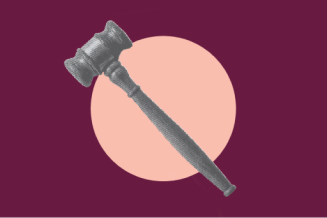(Originally posted on Daily Kos.)
Yesterday, a task force appointed by New York governor David Paterson issued its report on the state's juvenile justice system. The report acknowledges the findings of the ACLU's 2006 report, Custody and Control — which documents the abuse and neglect of girls incarcerated in New York — and calls for radical changes in how New York responds to delinquency.
The task force's report is right on target, especially when it prescribes diverting troubled kids away from state lockups and into community-based alternatives to incarceration. Through decades of work combating the abuse of adult and child prisoners, we at the ACLU have seen first-hand the massive over-incarceration happening across the country. We've also seen again and again that in any prison-like setting — whenever there is a keeper and a kept — there is inevitably abuse.
The second key recommendation in the governor's report is that the state's youth prisons scrap their punitive model of juvenile corrections in favor of a more effective therapeutic approach. The third is that an independent watchdog agency should be created to police the youth prison system. We agree that rehabilitation and oversight are vital. Abuse thrives in darkness, and to curtail abuse, there must always be people standing outside the youth prison system shining a light inside.
Such an honest assessment is a necessary, though not sufficient, step for change. If the governor and the agency can translate the report's recommendations into reality, the future will be a lot brighter for New York's most vulnerable kids.
But the report isn't perfect. It falls down when it mentions what's happening inside New York's youth prisons now, calling reports that excessive physical force is used against children the "most disturbing" of such revelations. In reality, while the physical abuse of children by the state is indeed horrific, a less visually dramatic form of abuse — solitary confinement — is happening in New York and elsewhere, and damages kids just as much.
Although the national consciousness that isolation can amount to torture is growing, few people know that it is not just adult prisoners, but also children, who are routinely subjected to solitary confinement. In 2006, we documented New York's punitive and administrative isolation of girls — "room confinement" is the local euphemism — and the damage it inflicts. One incarcerated girl said in a written complaint that when she was forced to stay alone in a cell for a long period of time, she "begins to think about what her stepfather did to her." Another said that prolonged individual confinement made her think "about cutting herself." The vast majority of girls in the system have histories of serious abuse. What they need to get their lives together is compassionate intervention by responsible adults, not hours, days, or longer in a bare cell.
Our investigations in other states have unearthed similar practices. Child prisons in Texas maintain whole units and a separate cadre of staff dedicated to solitary confinement — they call it their "security program." Children there report being sent to isolation for rule violations as minor as talking out of turn. Girls in particular are also subjected to isolation in response to self-harm, such as self-cutting or expressing suicidal thoughts. It's hard to imagine a more destructive reaction to a child in crisis, but it's the norm.
Our investigation of Puerto Rico's girls prison found similar abuses. Girls reported being subjected to solitary confinement under conditions of extreme cold for misbehavior committed by themselves or others, and for self-harm. Girls who hurt themselves are singled out for especially brutal treatment: they are stripped of their clothing and left in an extremely cold and bare isolation cell wearing nothing more than a paper gown. Describing confinement in a cell where she couldn't talk to anyone, one girl said that such conditions "te ponen loca" (drive you crazy).
A century and a half ago, Charles Dickens found isolation's "slow and daily tampering with the mysteries of the brain, to be immeasurably worse than any torture of the body." He called isolation "a secret punishment which slumbering humanity is not roused up to stay." It is time to rouse ourselves in opposition to the solitary confinement of children, by exposing this "secret punishment" in all its guises and by banning it from our child prisons.
Mie is the author of Custody and Control, Conditions of Confinement in New York's Juvenile Prisons for Girls.


